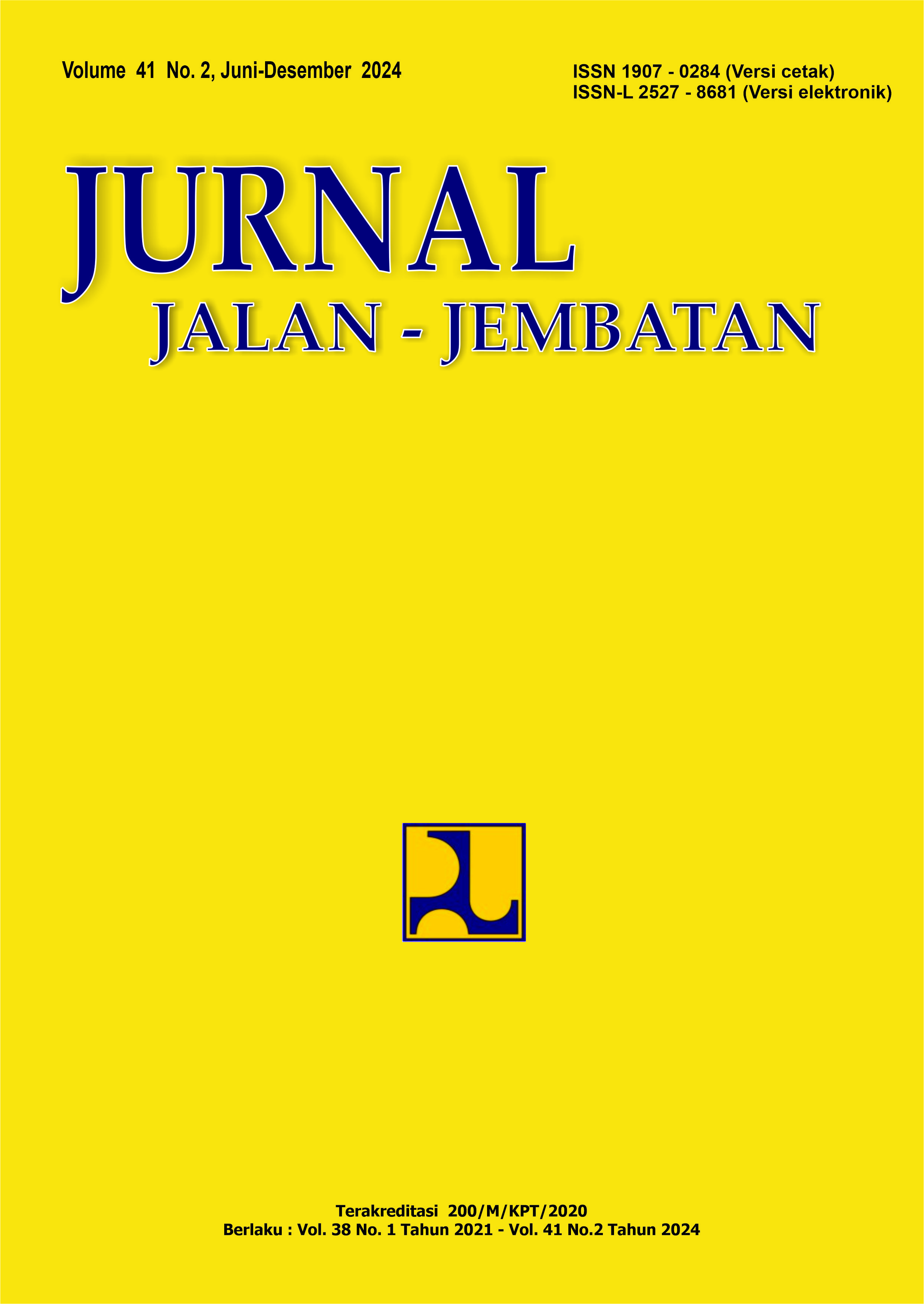THE EFFECT OF COAL WASTE ADDITION ON HIGH PLASTICITY CLAY STABILIZED WITH CEMENT ON CBR
Main Article Content
Abstract
High plasticity clay (CH) has poor material characteristics, such as considerable shrinkage due to high plasticity, so soil improvement is needed, for example, using cement and coal waste (bottom ash and fly ash, BAFA). The purpose of adding cement and BAFA type C is to see the effect on changes in soil CBR values. Variations in BAFA addition are 4%, 8%, 12% and 16% and PCC cement 3% and 5%. The percentage of bottom ash content to fly ash in BAFA is 2:1. Based on the test results, an increase in the CBR bearing capacity value was seen from 0.78% in the original soil to 18% in samples with a mixture of 5% cement and 16% BAFA with 7 days of curing. The CBR sample S5-B16-C7 is the largest value of all sample variations. The increase in the CBR value is huge from 0,78% to 18.73% This value proves that the combination of mixtures can effectively increase soil-bearing capacity. Based on microscopic testing of CBR samples, it can be seen that the higher the BAFA and Cement content, the rougher and paler the changes in the sample structure are. Conversely, the sample structure is smoother at the lowest BAFA content and cement content, and the sample colour is brighter, approaching the original soil colour. The results of this study indicate that BAFA can be used as pavement materials and provide a solution to the environmental impact of industrial waste.
Article Details

This work is licensed under a Creative Commons Attribution-NonCommercial-ShareAlike 4.0 International License.
Authors who publish in this journal agree to the following terms:
-
Authors retain copyright and grant the journal the right of first publication with the work simultaneously licensed under a Creative Commons Attribution License, which allows others to share the work with acknowledgment of the work's authorship and initial publication in this journal.
-
Authors may enter into additional contractual arrangements for the non-exclusive distribution of the journal's published version of the work (e.g., post it to an institutional repository or publish it in a book), with acknowledgment of its initial publication in this journal.
-
Authors are permitted and encouraged to post their work online (e.g., in institutional repositories or on their website) as it can lead to productive exchanges, as well as earlier and greater citation of the published work.
Each submitted manuscript must be accompanied by a "Manuscript Originality Statement" and a "Copyright Transfer Statement".

